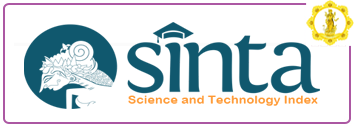Faktor Penyebab Terjadinya Campur Kode Basa Bali Dalam Pupulan Cerpen Kupu–Kupu Kuning Ngindang Di Candidasa Karya I Ketut Sandiyasa
DOI:
https://doi.org/10.25078/ds.v3i2.3095Keywords:
Code Mixing, Storiette, FactorAbstract
Language is the main medium used by all levels of society. each language will experience its own periodization which will gradually be left behind by its speakers, especially in Balinese. Literature is a good teaching or guide for humans and is a form of creative art by using language as an intermediary medium. Modern Balinese literature, especially short stories, has sprung up among the community which brings a lot of novelty. This novelty can be seen in the use of language that is mixed with Indonesian and English which is called code mixing. One of them is a collection of short stories about the yellow butterfly Ngindang di Candidasa by I Ketut Sandiyasa. In this literary work, there are many code-mixing in the presentation. One of them is in the title of the certification short story, which as a wholeuses more Indonesian than Balinese. In this study examines one problem formulation, namely; What are the faktors that caused the emergence of code-mixing in the Pupulan short story Butterfly – Kupu Kuning Ngindang Di Candidasa by I Ketut Sandiyasa?. This problem formulation uses sociolinguistic theory and language choice theory. The method used is interviews, literature and documentation. The type of data used in this research is descriptive qualitative. The results of the research obtained in Balinese Language Code Mixing in the Pupulan Kupu - Kupu Kuning Ngindang short story in Candididasa are due to the presence of 2 influencing faktors, namely intralinguistic faktors and extralinguistic faktors. Intelinguistic faktors are faktors that come from the language itself, while extralinguistic faktors include speaker faktors, place of speech faktors, purpose of speaking faktors, and developmental faktors.









